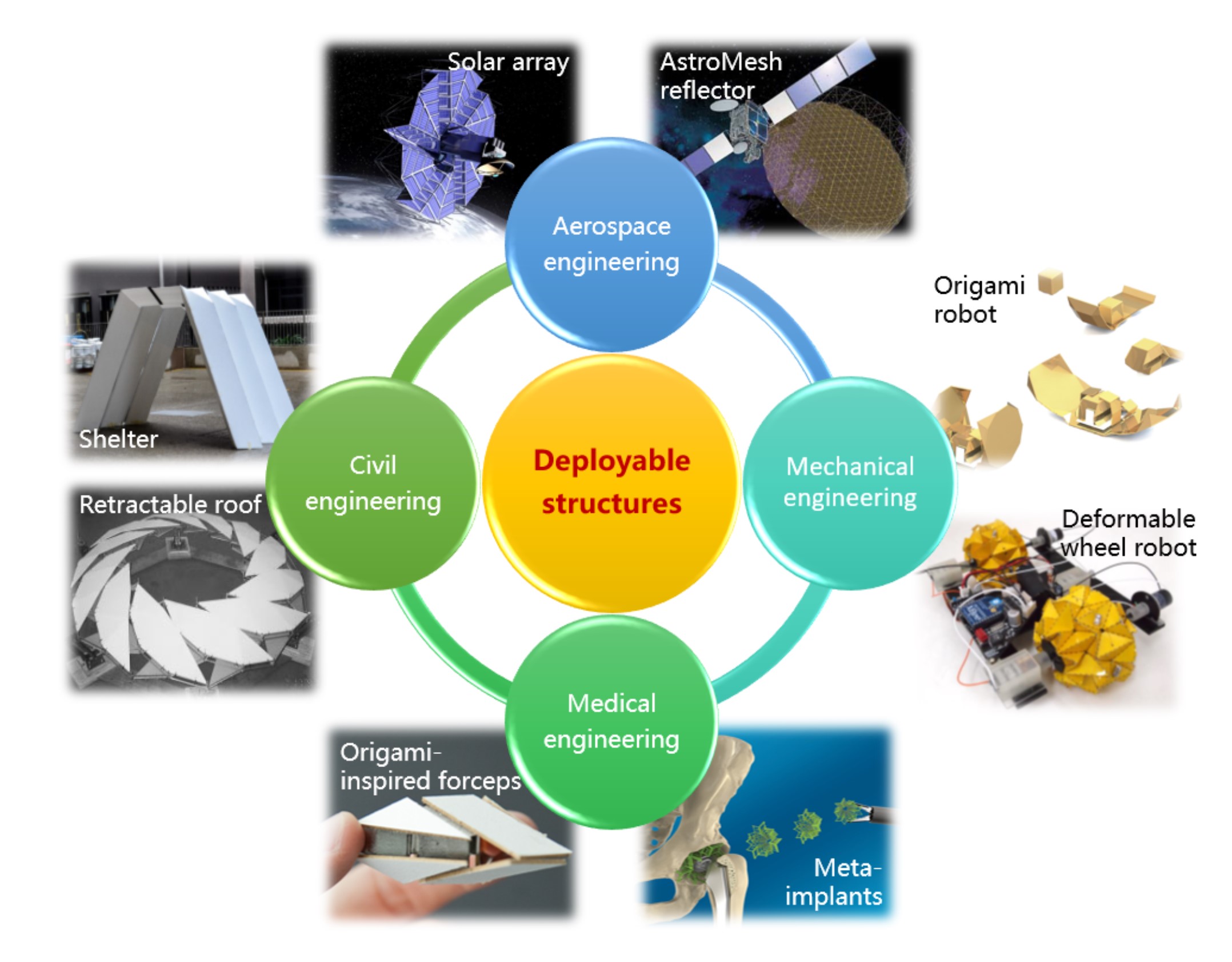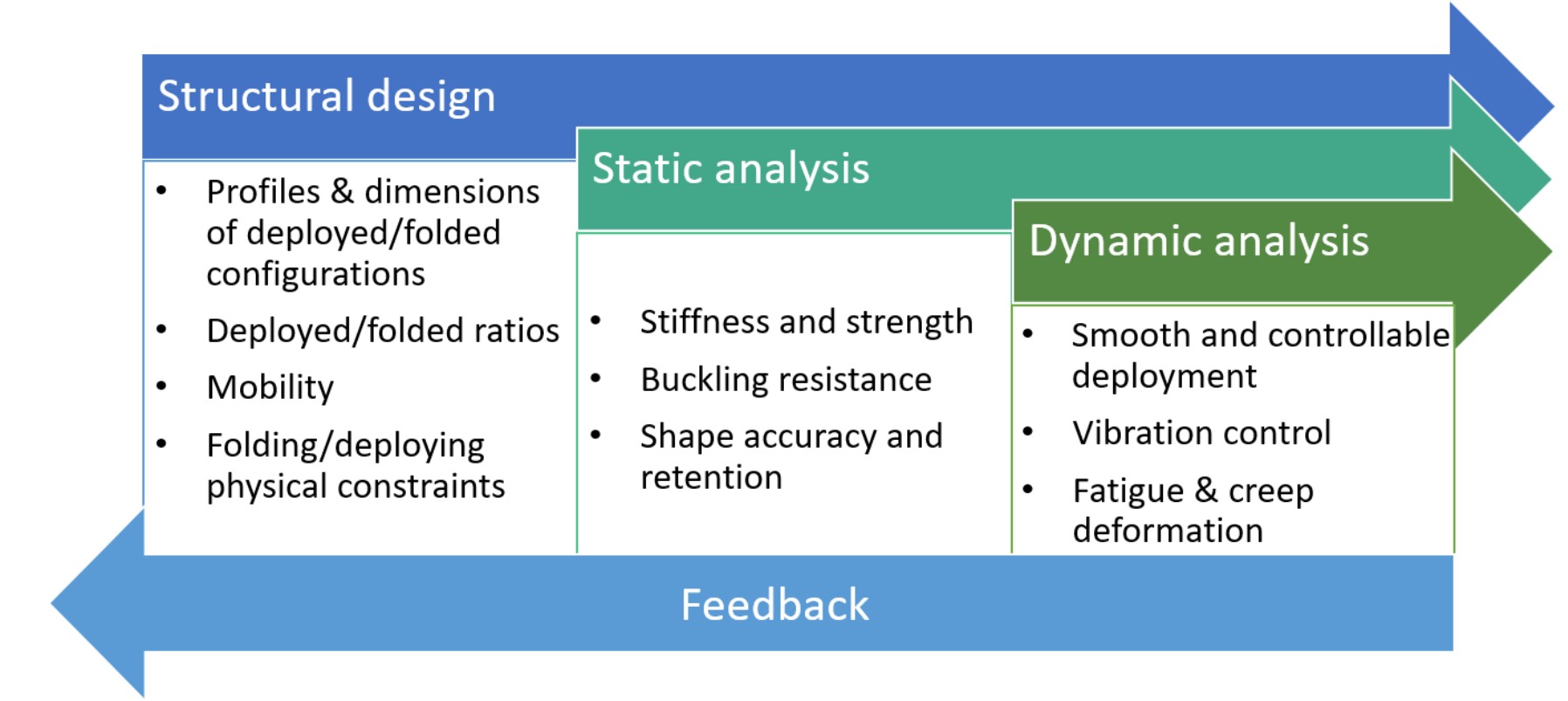|
Deployable Structures: Structural Design and Static/Dynamic Analysis
From: Date: 2021-11-06 Deployable structures can realize the transformation from a folded configuration to a deployed configuration to satisfy the requirements of applications. They have been widely used in civil components, medical devices, transformable robotics and other engineering applications, as shown in Fig. 1. According to the application demands, the initial structural design of the deployable structure is normally proposed first, followed by static and dynamic analysis to evaluate the design. Next, feedback is given to the structural design to further modify or require a new design proposal. After several such design cycles, an optimized structure is formed with all the expected functions, as shown in Fig. 2. However, to date, there are no mature systematic approaches for the design and analysis of deployable structures due to diverted application demands. Fig. 1 Examples of deployable structures in engineering applications. Fig. 2 The development process of deployable structures. 1. Design of deployable structures
The research on the structural design of deployable structures normally includes the geometric design of configurations, selection of the constituent elements (rigid and/or flexible elements, rods, panels and/or membranes), the driving and locking mechanisms. To adapt to different application environments, the features of the deployable structure vary, including a large deployable ratio for ultra-large flexible solar wings and antennas, high-precision with solid working surfaces for phased array antennas and parabolic or cylindrical antennas, and light-weight structures for foldable tents. According to whether the components are rigid or not, the deployable structures are classified into three categories, rigid, flexible and rigid-flexible deployable structures, which has their own design challenge and advances for application scenarios. Fig. 3 Summary of the challenges in the structural design of deployable structures 2. Performance analysis
Performance analysis is to ensure the static and dynamic properties during deployment and in service. The static properties refer to not only the load-bearing capacities and stability depicted by stiffness, strength, and buckling resistance but also the surface accuracy under static loads. For general deployable structures, more attention is given to their strength, stiffness, and buckling resistance under service loads. Dynamic properties concern the deployment reliability, deployment speed, acceleration, inherent frequency, fatigue, etc.. Dynamic properties ensure the deployment of deployable structures be smooth, stable, and controllable, avoid damage caused by a sudden change in load at the end of deployment and control vibrations in the deployed configuration under service loads within the allowable range and without resonance. Fig. 4 Summary of the challenges in the performance analysis of deployable structures Finally, the paper points out that combining structural design and performance analysis effectively to design structures with optimal performance and to achieve the integrated design of structure-function-performance is a prospective challenge. As rigid skeletons and flexible skins are increasingly combined to design lightweight deployable structures with high rigidity, realizing coordinated motion without interference between the rigid and flexible components and realizing the coupling effects in the deployment and deployed configurations are still significant tasks to be solved. In the near future, space-deployable structures with ultra-large folding ratios are urgently required to further explore and utilize cosmic resources, which poses great challenges in designing 3D deployable structures with reliable performances. Meanwhile, micro-deployable structures are being developed for high accuracy and reliability to apply in miniature ultraprecision medical devices, microsatellites, etc. Deployable structures with multiple folding and unfolding modes are in great demand for multi-task application scenarios. The integration of structure and function will be achieved with the further development of novel smart materials, which leads to a multi-disciplinary research.
X. Zhang, R. Nie, Y. Chen, B. He, Deployable Structures: Structural Design and Static/Dynamic Analysis, Journal of Elasticity, (2021) 1-37. |




